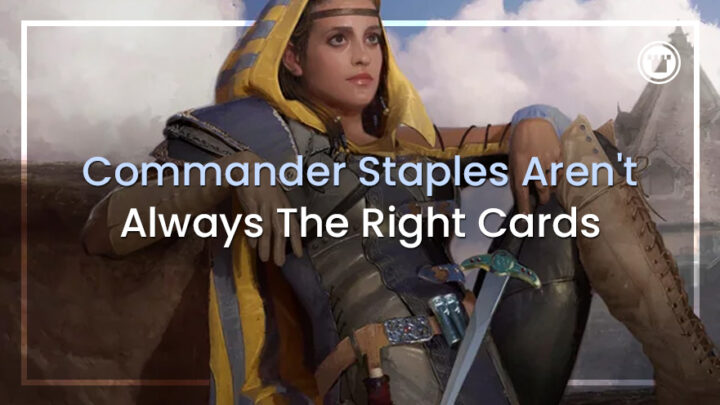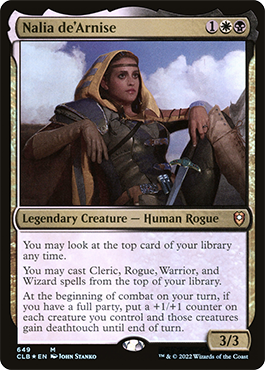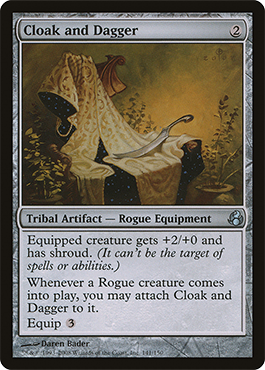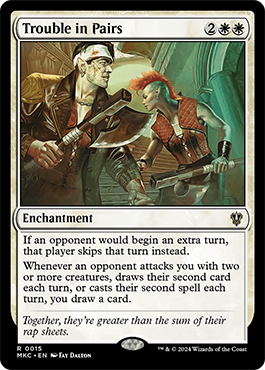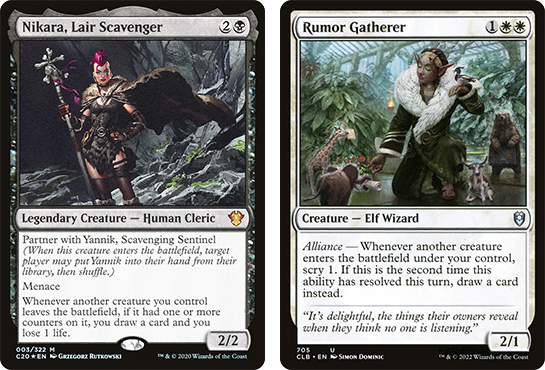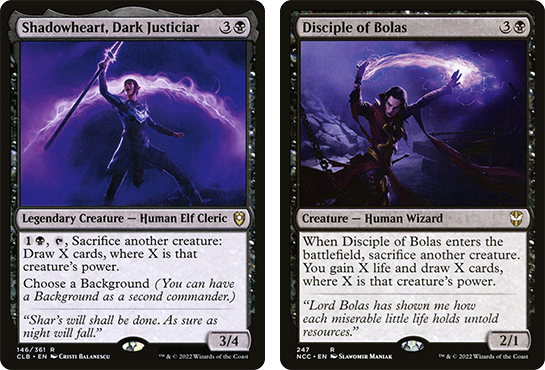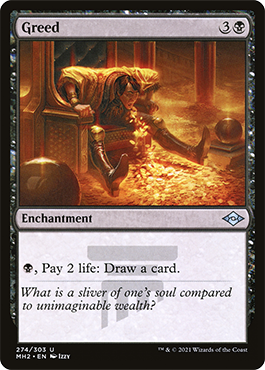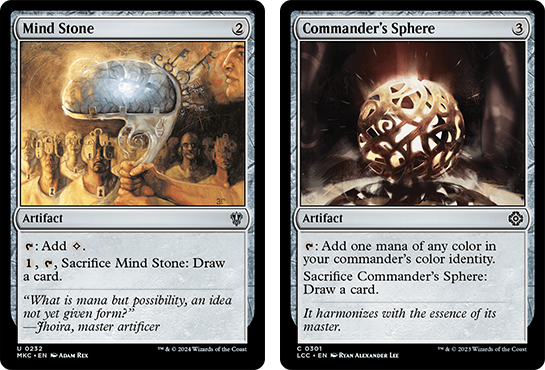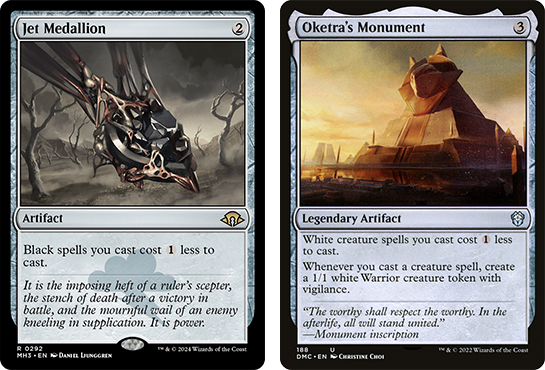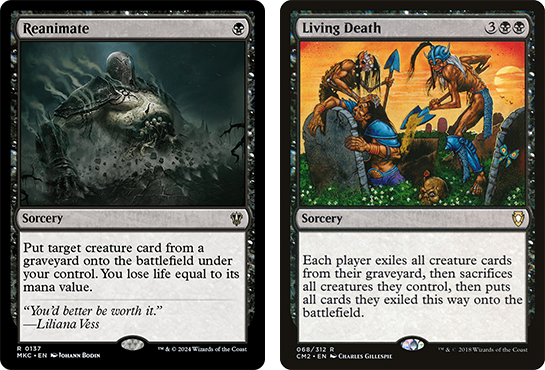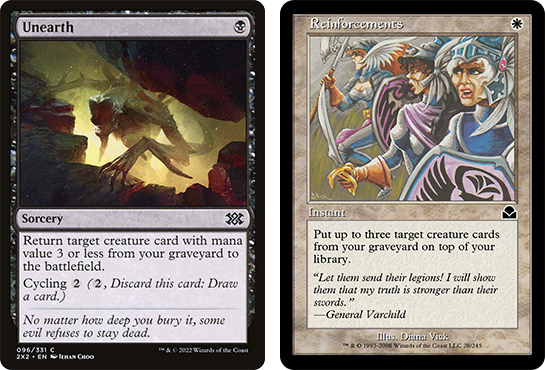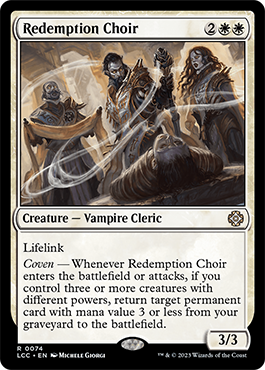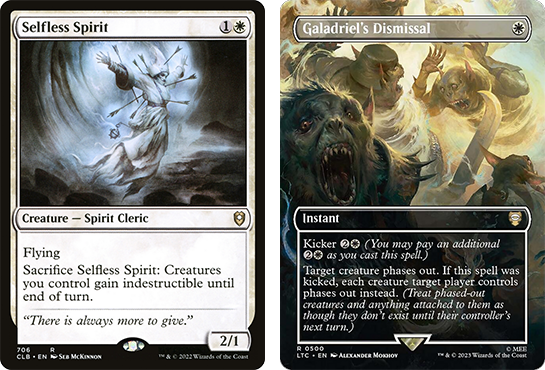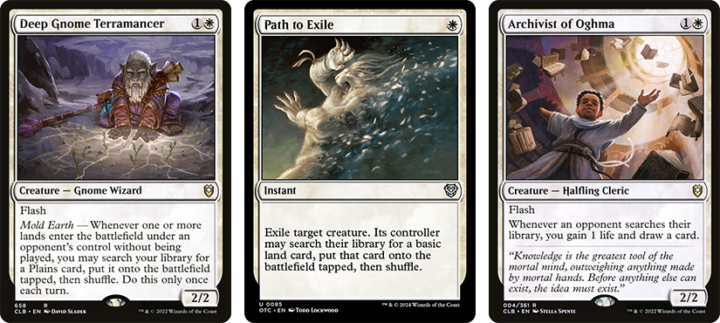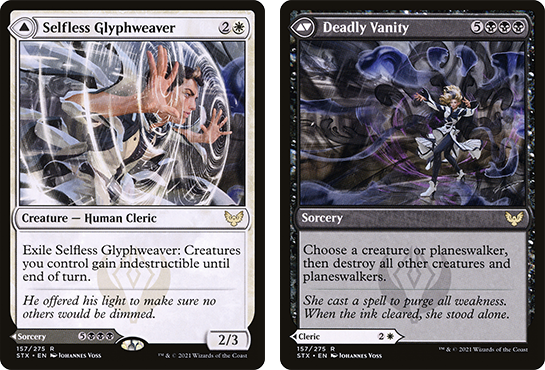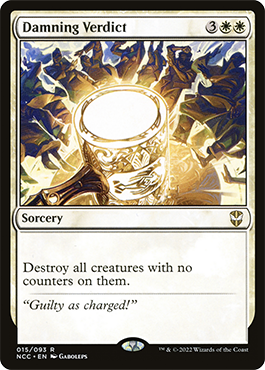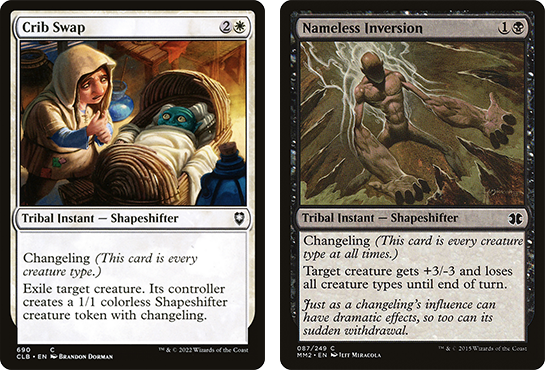Commander Staples are staples for a reason: they’re widely played, powerful and are a good choice for the average deck. They aren’t necessarily best-in-slot for your deck, though. Kristen shares some tips and truths about how to refine your decks further.
What if I told you that you don’t actually want to be running Swords to Plowshares in your build? Or that Reanimate and Animate Dead are the least synergistic spells for your strategy? How about the wild idea that Sol Ring and Arcane Signet might pull less weight than some other rocks?
Well, Sol Ring aside – because there’s no competing with that – all of the above examples are very real instances where running a staple over something that synergizes with your build might actually be dropping you crucial synergy points that are scuffing your build.
I want to make it clear before we head further that if you’re playing super high power or cEDH level Commander, then this article isn’t really for you, as the main goal of card selection for that format is mana efficiency. Where we’re playing at more casual tables, you can afford to be a little less efficient to get more bang for your buck.
BEST-IN-SLOT IS DECK DEPENDENT
Best-in-slot, or BiS, is a term used to describe the very best option, bar-none. It’s thrown around semi-casually in Magic, and in Commander especially, as the term is tied inextricably to context. What’s BiS for one deck might not be for another, and given Commander offers so many permutations, strategies, playstyles, power levels and approaches, calling anything BiS requires some hefty posturing and a really solid argument.
As such, people often default to staples. Staples are staples for a reason; they’re clearly powerful, played in the most decks, and won’t actively cause you any issues running them. They’re always going to be at the very least decent, with some being far and away unmatched in potential.
I’m going to argue today that staples aren’t the be all and end all of deckbuilding, and convince you to stop letting EDHRec dictate exactly what to play. EDHRec is a fantastic resource, but looking at it without filters, or using it to build a shell instead of as a peer-review of your process? Well, that’s sub-optimal.
NALIA DE’ARNISE
The example we’re going to run with is Nalia de’Arnise. Nalia lets us cast party creatures off the top. When you have a full party, everyone gets a +1/+1 counter and deathtouch until end of turn. Nalia is a party deck, but she doesn’t have to be. You could go mono-clerics and hope that Edgewalker and some good luck let you burn through your library.
My goal building Nalia was to ensure I could cast off of the top of my library as much as possible. In order to do that, I wanted to pump that number up as high as possible. One way to do that was to put as many effects onto party-type spells as possible.
CREATURE VS NONCREATURE: THE GREAT DEBATE
Whether to run a creature vs noncreature spell is a debate as old as Magic itself, and ever since Wizards pivoted to making the game about creatures, it’s been correct in many instances to run the creature. With modern Commander, having bodies is how you attack, block, gain value, and get stuff done, so I’ve been increasing my creature counts in recent times. A deck like Henzie, for instance, wants at least 33 creatures to Blitz into play. Nalia?
Well, Nalia ended up with 47 creatures, all but two of which being Party ones. Plus two kindred spells, and a kindred artifact in Cloak and Dagger. That means that once we’ve drawn our opener, it’s very likely that 50% of our deck will be “hits”.
With the rest of my spells, and my manabase, I filled it with effects we wanted, sure, but also effects that manipulate the top of the library. Let’s break it down, by function.
DRAW
We still want to draw cards and refill our hand, but instead of relying on staple draw cards like Trouble in Pairs, Necropotence, or Night’s Whisper, our draw is either on party creatures or stapled to other effects.
Our single instances of draw come from Nikara, Lair Scavenger or Rumor Gatherer, letting us take whatever we can’t cast.
Our burst draw is on Shadowheart or Disciple of Bolas, which cash in creatures with lots of +1/+1 counters to refill our hand.
I didn’t end up running it in this draft, but having your draw be on something like Greed is much preferable to draw that happens when you can’t control it in a deck like this.
RAMP
Because we’re casting off the top of the library, our ramp choices have to be cognizant of this too. If we aren’t ramping with a party creature then we need to be looking at “outdated” mana rocks like Mind Stone and Commander’s Sphere, because the ability to draw our top card and get over a bump is so crucial to casting off of the top.
We also value cost-reduction highly, and though I didn’t have Edgewalker lying around for this build, I am into clerics enough that it would be a good option. Instead, I went for Pearl Medallion, Jet Medallion, and Oketra’s Monument, which gives us the most bang for our buck (and even some Warrior tokens!).
What’s more, this is an Explorer’s Scope deck. Sword of the Animist might usually be “better”, but for us, it’s cheap to play and equip, and if we play our deck right, we can nearly always get a land off the top.
While Sol Ring and Arcane Signet are staples, in our deck, they don’t provide as much value. On turn 1 we want to play a one drop party creature, not a Sol Ring, and the cost reduction effects should be a net gain in mana efficiency as the game progresses.
RECURSION
While more popular recursion like Animate Dead, Reanimate and Living Death are absurdly powerful, they do less for us than other effects. Living Death in particular is bad when we are stacking +1/+1 counters.
Instead, the more mana efficient and synergistic options are spells like Unearth, which cycles to get rid of a speed bump on our library, and Reinforcements, which for one mana can help us recast three key creatures.
Repeatable party-type recursion like Orah, Skyclave Hierophant and Redemption Choir just do way more for us.
PROTECTION
In a deck with so many creatures, protection isn’t as key as it is when you have fewer creatures or haymakers.
We still run some, but it’s either stapled to a party creature like Selfless Spirit, or it’s Galadriel’s Dismissal. The latter spell can save one of our creatures, or our whole board, or it can phase out blockers for us to swing and win. The flexibility is king here when we have so few slots available. Teferi’s Protection and such are great spells, but ultimately when we run so many creatures it’s best to just lean into it.
REMOVAL
While Swords to Plowshares is great, if you’re running Archivist of Oghma and/or Deep Gnome Terramancer, you’d much rather be on Path to Exile and Winds of Abandon.
Similarly, I run Selfless Glyphweaver//Deadly Vanity over something like Damn, because getting two effects on one card that synergizes with Nalia is too good to pass up.
Other wraths to run are Damning Verdict or the one that makes each player choose a Party and sacrifice the rest. This kind of wrath can be made asymmetrical with ease.
Lethal Scheme is in my build too, because Conniving removes cards from the top, and because we want to have counters on our stuff. Is Swords to Plowshares really better here for us? I don’t think it is.
There’s also Crib Swap and Nameless Inversion. Are Generous Gift and Fatal Push “better”? Yes, but you can’t cast those off the top, can you?
MANABASE
Finally, we get to the manabase, which was really interesting for me to put together. Normally in a two-color deck I favor plenty of basics, but I actually ran fewer than usual because I’d much rather have more two-color lands to help me cast everything off the top.
Barren Moor and Secluded Steppe feature in a manabase for me for the first time in a while, because again – cycling is great for Nalia decks.
Fetchlands are to be taken highly here, and I went so far as to include both Prismatic Vista and Fabled Passage, along with regular Fetches, just for the extra shuffle effects. Rounding things out, Mortuary Mire puts something back on top for us to cast, and we simply have to play both Temple of Silence and Shadowy Backstreets.
Usually in Orzhov I play snow lands and Field of the Dead, or I play Cabal Coffers. In this build, those cards would probably reduce the consistency of our colors, and and require more basic lands, both of which would be a net negative to our ability to keep casting off the top.
END STEP
Building Nalia has been a fun puzzle, and highlights for me an important part of deckbuilding: the intention behind your inclusions beyond “this card is good”. Consider why you are playing certain cards, and ask yourself if there’s another option that might be better. Casual EDH doesn’t have to be hyper-optimized, and often, strong synergy is what wins the day. Besides which – it paints less of a target on your back, and that’s priceless.

Kristen is Card Kingdom’s Head Writer and a member of the Commander Format Panel. Formerly a competitive Pokémon TCG grinder, she has been playing Magic since Shadows Over Innistrad, which in her opinion, was a great set to start with. When she’s not taking names with Equipment and Aggro strategies in Commander, she loves to play any form of Limited.

